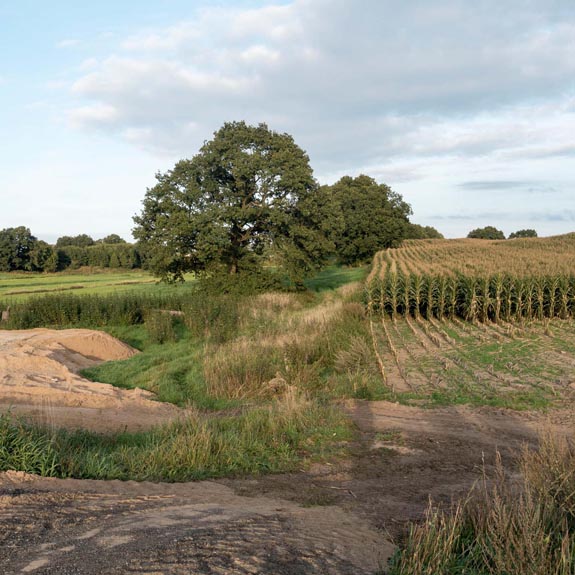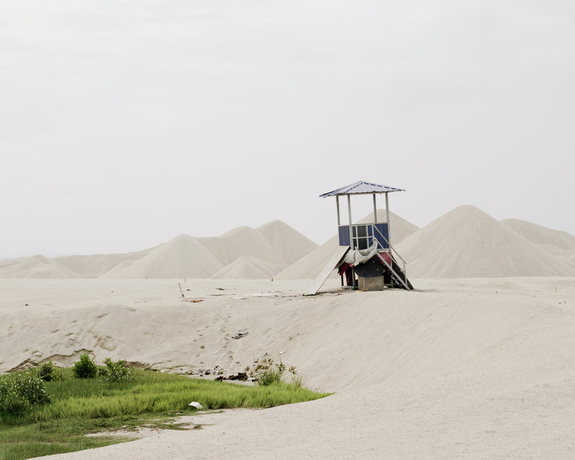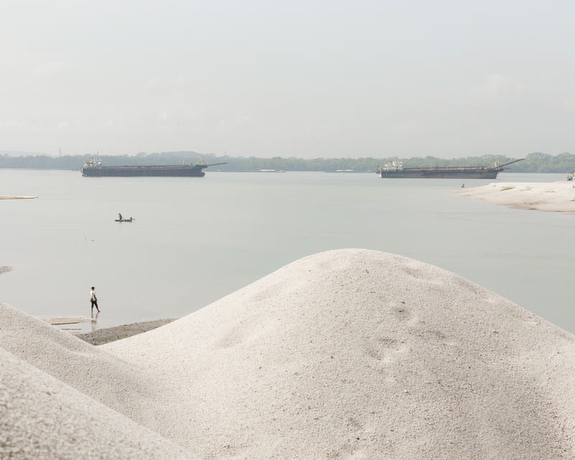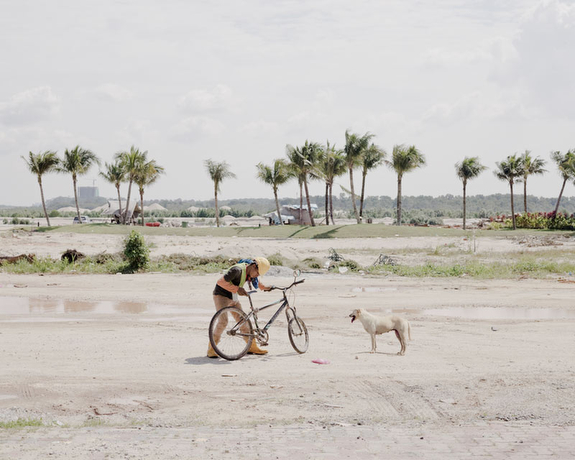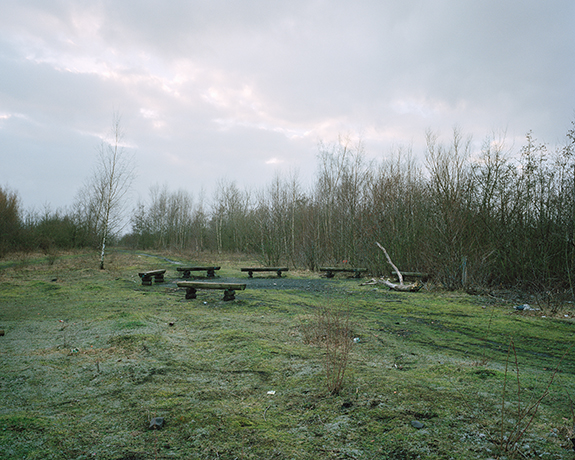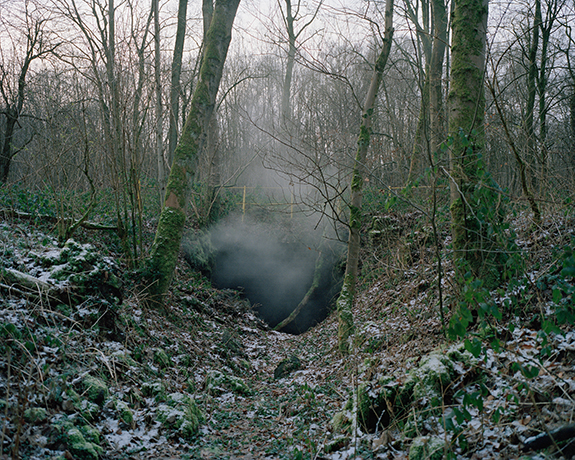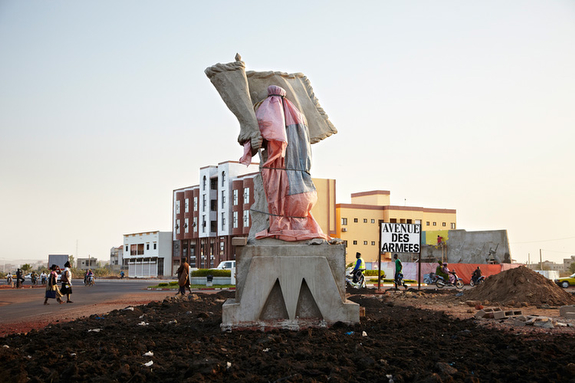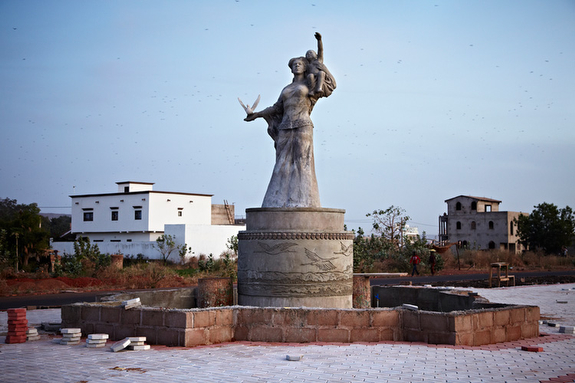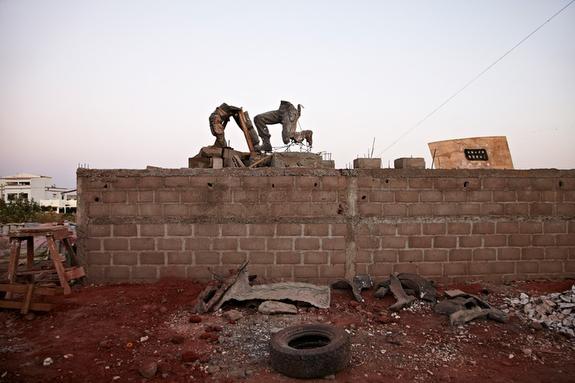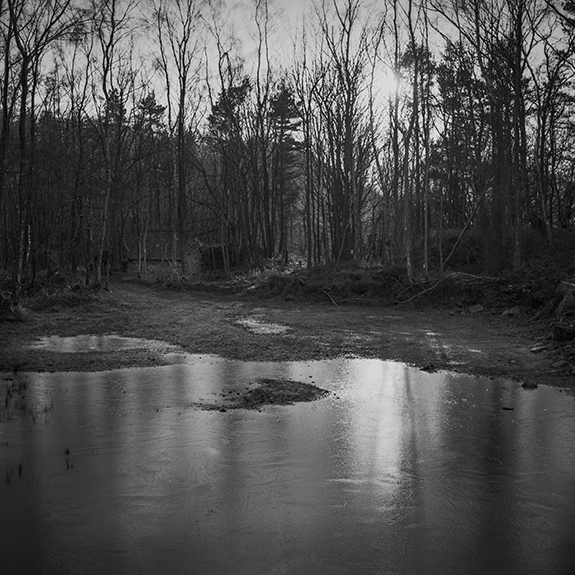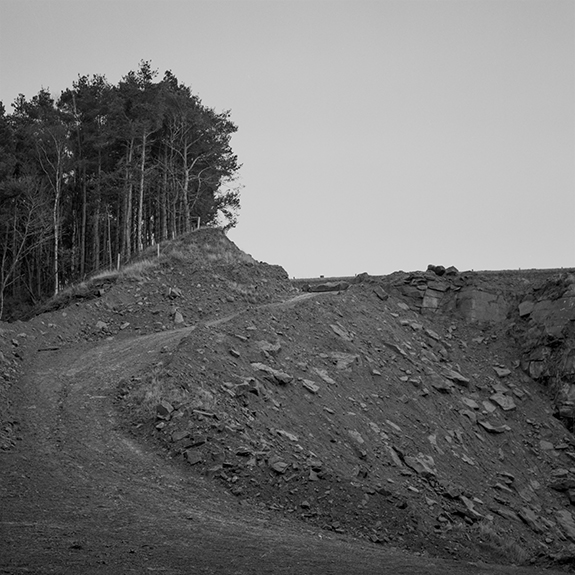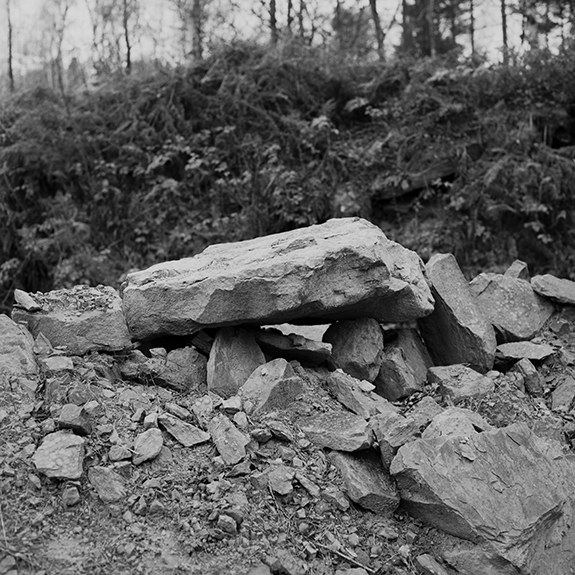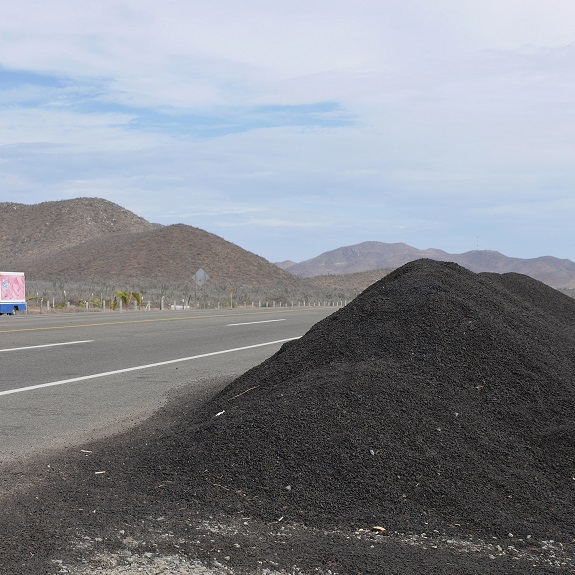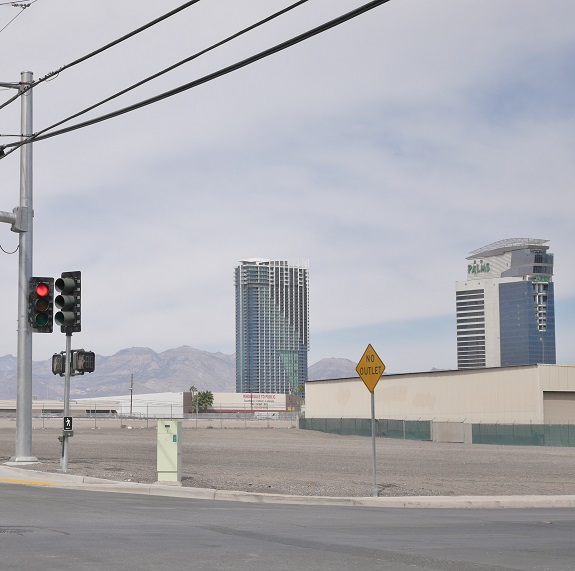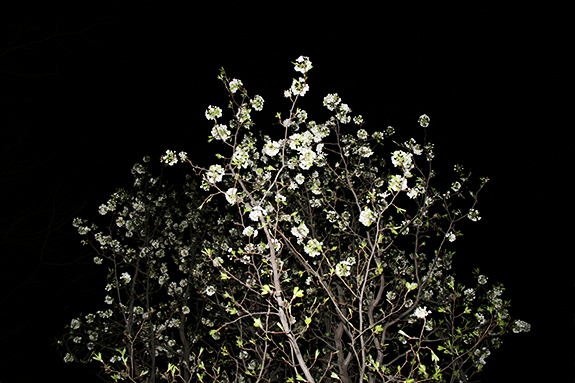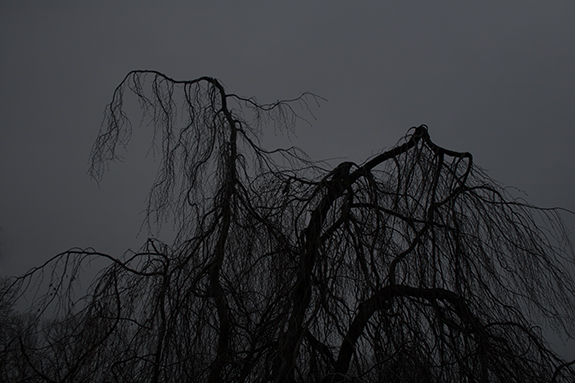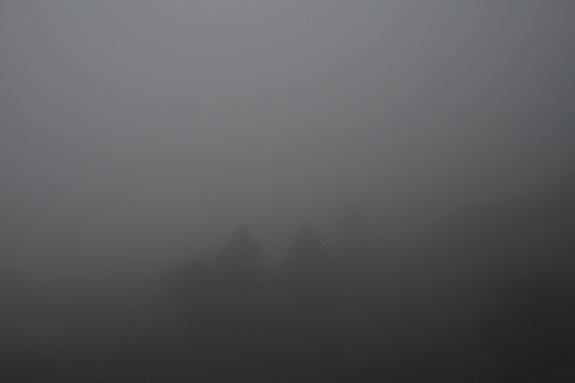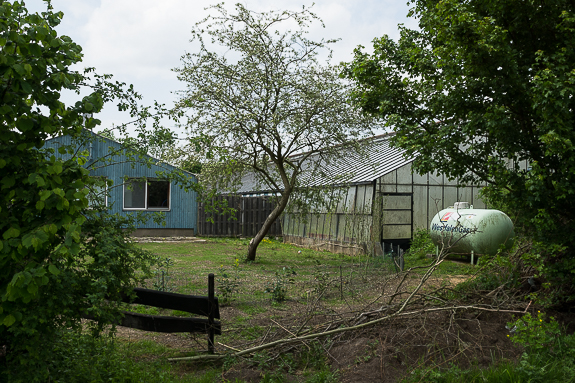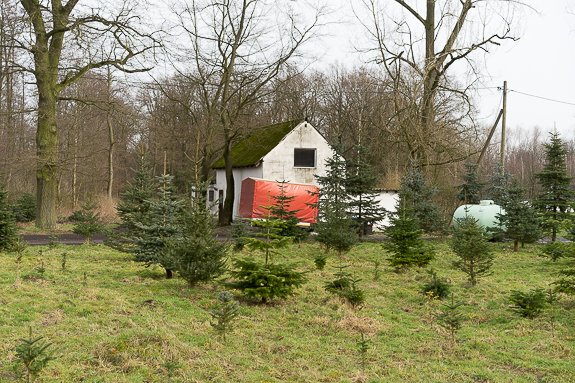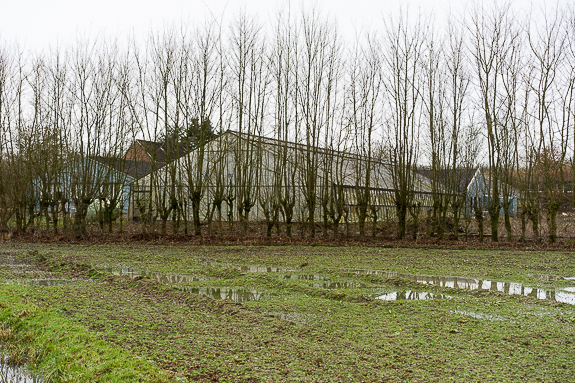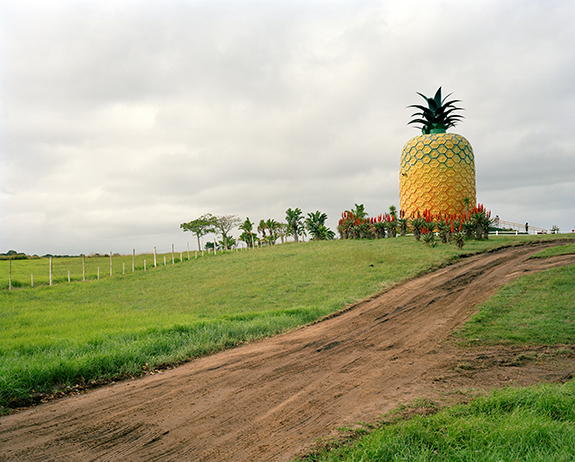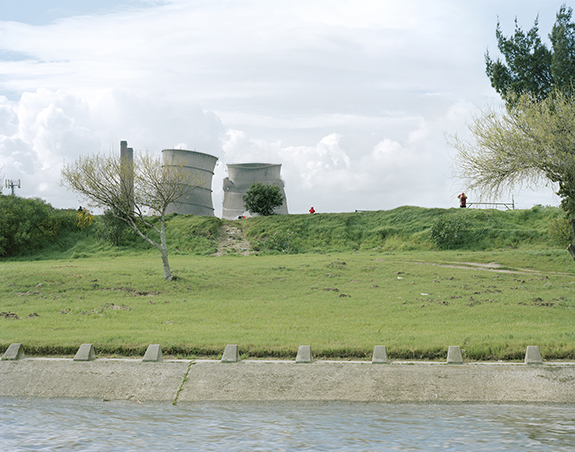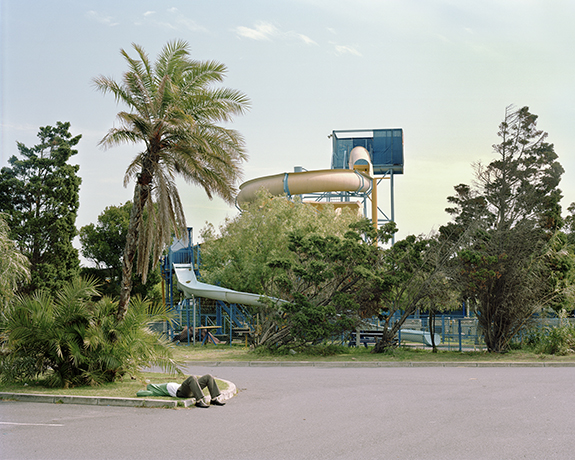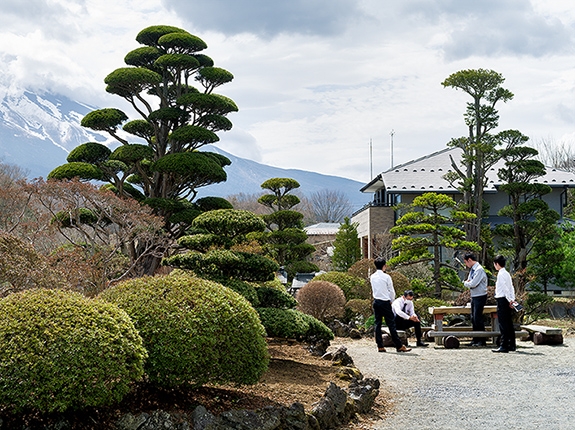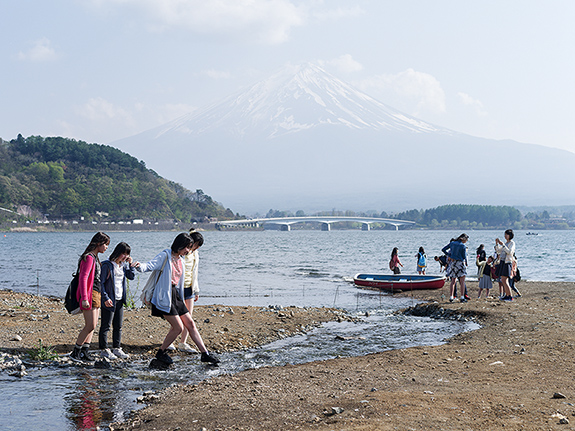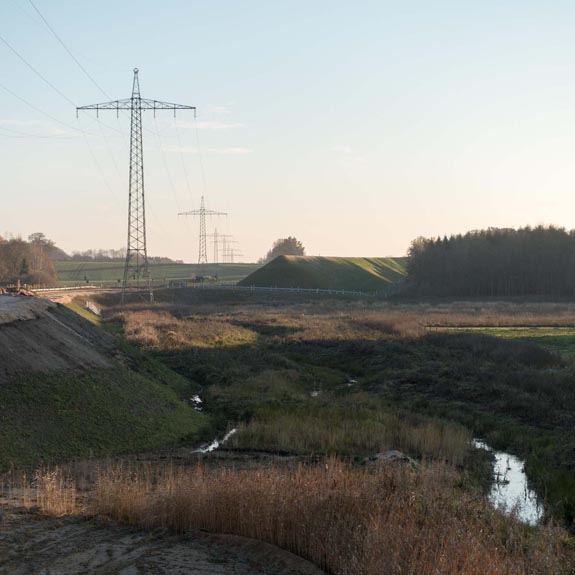
German landscape has been cultivated for centuries: created through continuous construction, destruction, rebuilding, mining and recultivation. However, until the industrial age landscape changed very slowly. Therefore, it appeared static and stable in relation to a human lifetime.
Only the advent of machines allowed mankind to change, destroy and rebuild, heap up and dig out landscapes within years, just like houses. Landscape photography used to treat landscape either as constant, changed only through the influence of nature or as something new, the result of human intervention.
The project called B404-A21 describes a process, the conversion of the route B404 into the motorway B21 on a stretch of 1.5 kilometres. The boggy terrain impedes motorway construction. Hundreds of piles are rammed 30 meters deep into the ground, thousands of tons of peat, clay and mud are removed and again thousands of tons sand are filled up, levelled, turned over and flattened again before being covered with nets, native soil, grass and bushes.
Creeks are diverted, pumped away, canalized and renatured. A distributor road, a motorway entrance and exit as well as two bridges are built. And every hollow fills with water, reeds grow, grass and weeds cover every pile of sand within weeks. Birds settle in, are driven out, come back or not.
Whatsoever: an awesome undertaking, a new traffic artery, destroyed nature, lush nature, profit and loss, a heroic undertaking and a devastation. The project is ongoing, bulky, and the outcome is still vague.
— Gregor Kuhlenbäumer, Kiel, Germany

